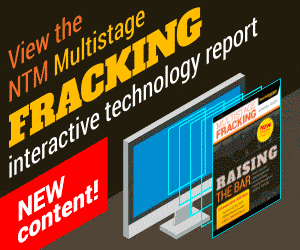DNV GL Guidance On Inspection Planning Of Offshore Structures Will Save Operational Costs
- Published: Monday, 23 November 2015
- Author: Daily News
The low oil price and a reduction in newbuilds have driven the integrity of existing assets up the agenda for the oil and gas industry. However, the cost of inspection programs can be significant, adding to the operational costs. DNV GL has now launched a recommended practice (DNVGL-RP-C210) providing the first international guidance on how to establish a sound basis for in-service inspection planning for fatigue cracks in marine structures.
The guidance will save operational costs by using a risk-based approach to identify the “hot spots” requiring inspection.
The cost of inspections of marine structures such as jackets, semi-submersibles and floating production vessels can put a strain on already challenged operational budgets, driving the need to develop inspection programs only addressing critical areas.
“What we are commonly experiencing, is the use of inconsistent inspection planning methodologies, which can result in costly inspections at non-critical areas, or worse, no inspection at critical areas," says Kjell Eriksson, regional manager for Norway in DNV GL - Oil & Gas.
The cost reduction is obtained by reducing the overall inspection and maintenance scope, still ensuring continued cost-efficient safe operation of the asset. This is done by using risk based methods in identifying the critical areas, so-called hot spots, that needs to be inspected and non-critical areas that do not need further assessment.
“Fatigue crack can cause significant damage to offshore structures. The criticality of fatigue cracks can vary, which combined with costly inspections programs drives the importance of developing accurate methods for identification of fatigue critical areas,” says Gudfinnur Sigurdsson, technology leader, Marine Structures, DNV GL - Oil & Gas.
“The use of risk based inspection planning for identification of critical areas for inspections will result in reduced inspection program and thereby a corresponding significant reduction in the inspection and operational costs."
In-service inspection for fatigue is carried out to assure that possible cracks in the structure do not exceed a critical level. The outcome of in-service inspections can then be used to update the estimated fatigue reliability of the structure.
The RP includes guidance on:
• Fatigue analysis methods for jacket structures, semi-submersibles and floating production vessels (FPSOs)
• Effect of methodology/refinement used in fatigue analysis with respect to calculated fatigue life
• Basic distributions of parameters required for calculation of stochastic properties for load effects and capacity
• Derivation of target reliability level in relation to consequence of a fatigue failure
• Methodology for probabilistic analyses for planning inspection for fatigue cracks
DNVGL-RP-C210 is based on the findings of a DNV GL led joint industry project (JIP) completed in 2013.
Download the Recommended practice here: https://www.dnvgl.com/oilgas/download/download-dnvgl-rp-c210.html
In the oil and gas industry, GL Noble Denton and DNV’s Oil & Gas business have joined forces to enable safe, reliable and enhanced performance in projects and operations. It provides a broad range of services, such as technical assurance; marine assurance and advisory; risk management advisory and offshore classification. Its 4,000 employees combine industry expertise, multidisciplinary skills and innovation to solve complex challenges for its customers. Together with its partners, it drives the industry forward by developing best practices and standards across the asset lifecycle.
-NTM-





